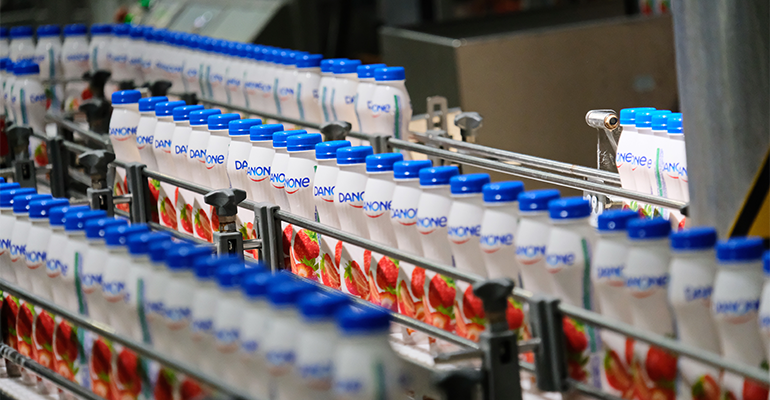News
Cultivated meat comes to the pet food sector
1 Oct 2021Cell-based protein technology has now migrated from human food to pet food. Brands such as Wild Earth, Because, Animals and Bond Pet Foods have all committed to eliminating animals from the supply chain that feeds pets.
As consumers become more aware of the impacts that their animal protein consumption has on the environment, they are increasingly seeking alternative sources. One category in which a switch to less animal-derived protein will make a difference is in the pet food sector. In the U.S., 25% to 30% of the environmental impact of meat consumption comes from dogs and cats, according to a 2017 UCLA study cited by Livekindly.

While the idea of cultured meat might appear to be the underdog option when one looks to alternative options to nourish their pet, the concept has begun to gain serious traction and investment.
Recently, California-based pet food brand Wild Earth announced it secured $23 million in funding from Veginvest, At One Ventures, and Big Idea Ventures, actor and animal rights activist Paul Wesley and Shark Tank’s Mark Cuban. Mark Cuban previously invested $550,000 in the company for a 10% stake in March 2019. While Wild Earth has yet to debut its concepts for retail, the company expects to launch its cell-based beef, chicken, and seafood pet foods next year.
Some companies have already progressed beyond ideation. Because, Animals is taking pre-orders for its cultured mouse meat treats for cats on its website. Bond Pet Foods said it plans to launch its first animal protein product by 2023. The company is working on creating a cultured meat derived from a heritage hen named Inga.
While this shift to focusing on the pet food sector as a springboard for culture meat may appear to be an unusual shift, it is actually strategic. Unlike foods suited for human consumption, securing acceptance for cell-based meat has a lower bar for pet food. “It greatly simplifies the product design to not have to please humans,” according to Rubio, who met Kelleman at New Harvest’s 2017 conference.
Safety and health regulations are still of concern when it comes to developing pet food, but rather than focusing on the look and feel of the products, nutrition is the top priority. In foods created for people, manufacturers need to consider taste, texture and protein response to various cooking methods. However, with fewer variables to account for in pet food, researchers can focus on creating cell-based meat at scale that delivers impactful nutrition benefits.
Beyond nutrition, cell-based pet food also allows researchers and scientists to work with more information, according to the non-profit research institute New Harvest. Mice are better understood by scientists than chicken or beef because they have long been used in a laboratory setting. That history is part of the driving reason behind Because, Animals selecting this protein source for its cat treats.
While there is still significant R&D required to translate these cultured meat concepts into reality, if manufacturers are successful with pets, it may not be long before this technology begins to gain steam and become more mainstream for people.
Related news

Oat Barista: Innovation for game-changing beverages
20 Nov 2025
Oat Barista is a clean label, sustainable, and innovative drink base specifically designed to create the perfect foam in one single ingredient.
Read more
Nitrites: Pressure grows on UK to follow EU’s lead
20 Nov 2025
Pressure is growing on the UK to follow the EU’s lead after the bloc revised its regulations on the permitted levels of nitrites and nitrates in cured meats.
Read more
Empowering innovation in fortification and colouration
13 Nov 2025
Divi’s Nutraceuticals offers a large portfolio of innovative, high-quality ingredients for foods, beverages, and supplements, with bespoke solutions and expert support for product success.
Read more
Danone highlights digestive health as potential ‘tipping point’ for food industry
13 Nov 2025
Danone is betting on a food industry “tipping point” that will bloat the market for healthy products, particularly those related to gut health.
Read more
Standing Ovation and Bel scale up casein production from dairy co-products
11 Nov 2025
Foodtech company Standing Ovation has partnered with cheese specialist Bel Group to manufacture dairy serums for industrial-scale casein production via precision fermentation.
Read more
AI attraction means foodtech startups must ‘prove’ rather than ‘promise’
4 Nov 2025
Reports suggest that artificial intelligence (AI) is sucking investment from foodtech and agritech, but investors say the picture is complicated.
Read more
Will postbiotics become the go-to functional ingredient?
3 Nov 2025
Postbiotics show significant promise for the functional foods market due to their safety profile and beneficial bioactive properties, research suggests.
Read more
Meet the finalists of the Fi Europe Innovation Awards 2025
31 Oct 2025
Who made it to the shortlist of the Fi Europe Innovation Awards 2025? Read about the 23 companies making food and drink products healthier and manufacturing processes more efficient.
Read more
Penguin and Club bars no longer classed as chocolate
30 Oct 2025
Penguin and Club bars can no longer be classified as chocolate after the pladis-owned McVitie’s brands turned to cheaper alternatives amid the ongoing cocoa crisis.
Read more
Shorter drying time, sweeter success!
30 Oct 2025
Curious about cost-effective, sustainable and delicious candy making? Stefan Wessel reveals how Avebe’s solutions reduce drying time and energy use by up to 50%.
Read more